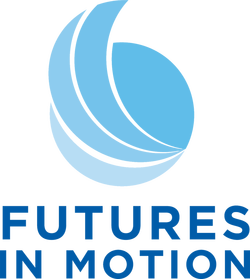Take Control of the Interview
by Markell R. Morris, Futures in Motion, Inc.
The typical job seeker experiences a lot of frustration in their job search. It’s no wonder. They have to solve the riddle of the hidden job market by getting focused on a job target, finding the best sources for job listings, and getting the “right” people in their network. At some point, their efforts do pay off, and they get invited for an interview.
Every day I work with job seekers on how to present their qualifications for the job they want, whether it’s a promotion or new career opportunity. Typically, when I ask them what they do, most people respond with either a job title or start listing tasks, duties and responsibilities. I see this all the time on resumes, too. Unfortunately, job titles, and lists of tasks, duties and responsibilities say very little about what you can actually produce on the job. Their typical responses don’t give enough insight into how they can help the potential employer.
Employers expect candidates to be able to communicate their value in terms of behavior and accomplishments. They believe that past behavior is an indication of future performance. In the selection process interviewers are looking for those key indicators of success. You have to “tell the story” in your resume, cover letter and in the interview to emphasize results. Using accomplishment statements to highlight a primary action and corresponding result or to illustrate the application of several skills to accomplish a key task will help you convince the interviewer that you’re the right person for their job.
The interview is your opportunity to sell yourself and qualifications for the job you want. Employers are looking for people who can the get the job done. To be successful in the interview and all other aspects of the job search, you must be able to communicate your value to an employer. In interviews, they look for examples of when you’ve done something WELL in the past.
The interview is your opportunity to sell yourself and qualifications for the job you want. Employers are looking for people who can the get the job done. To be successful in the interview and all other aspects of the job search, you must be able to communicate your value to an employer. In interviews, they look for examples of when you’ve done something WELL in the past.
This is your chance to take control of the interview!
Since most job seekers I’ve worked with are used to listing job title, tasks, duties and responsibilities, it’s my job to help them shift their mindset to focus on accomplishments, achievements and successes on the job and link that to relevant benefits to a company. I help my clients by walking them through a couple exercises. First, we work on identifying their skills. Then, we use the PAR (Problem, Action, Results) Approach to brainstorm relevant examples of when they’ve used their skills successfully in work situations.
When describing skills and accomplishments state the problem (P), describe the action or actions you took to address the problem (A), and describe the result (R).
Here’s an example of an accomplishment statement:
“Sales increased by 25% due to my sales efforts.”
Here’s the same example applying the PAR approach:
“ The sales were falling below the quarterly target. As the sales manager, I was responsible for executing sales programs targeted at potential customers. First, I conducted analysis on people’s buying habits of this and similar products. Then, I re-vamped our sales programs using feedback from past buyers. Finally, I updated our online sales demonstrations and established a sales hotline. As a result, sales increased 25%.
You’ll notice in the example that there were several skills involved with accomplishing the desired outcome.
In the selection process interviewers are looking for those key indicators of success. You have to “tell the story” in the interview to emphasize results. Using accomplishment statements to highlight a primary action and corresponding result or to illustrate the application of several skills to accomplish job specific tasks.
By using this approach and with a little practice, you will be able to confidently describe your experience and stand out from other job seekers.
When describing skills and accomplishments state the problem (P), describe the action or actions you took to address the problem (A), and describe the result (R).
Here’s an example of an accomplishment statement:
“Sales increased by 25% due to my sales efforts.”
Here’s the same example applying the PAR approach:
“ The sales were falling below the quarterly target. As the sales manager, I was responsible for executing sales programs targeted at potential customers. First, I conducted analysis on people’s buying habits of this and similar products. Then, I re-vamped our sales programs using feedback from past buyers. Finally, I updated our online sales demonstrations and established a sales hotline. As a result, sales increased 25%.
You’ll notice in the example that there were several skills involved with accomplishing the desired outcome.
In the selection process interviewers are looking for those key indicators of success. You have to “tell the story” in the interview to emphasize results. Using accomplishment statements to highlight a primary action and corresponding result or to illustrate the application of several skills to accomplish job specific tasks.
By using this approach and with a little practice, you will be able to confidently describe your experience and stand out from other job seekers.
Ready to take control of your next interview? Book a mock interview with me.

Markell R. Morris is an international speaker, career counselor and job search coach based in Long Beach, CA. Her mission is to help frustrated career changers get excited about their life and career after loss and personal challenges. She has created career programs and resources that help her clients gain a sense of direction and hope, so they can go after their goals with confidence. Download her free ebook, Create a Career You Love, for career advice to discover your meaningful career path.
REPRINT GUIDELINES: You may reprint these articles free of charge in your newsletter, magazine, or on your web site, provided that they are unedited, and that the copyright, bio slug, and contact information below appears with each article. Articles appearing on the web must provide a hyperlink to our website. Please provide us with a courtesy copy of the print or email issue containing the article, or the URL of any article posted to the web. All articles are written by Markell R. Morris, Futures in Motion, Inc.
Join the conversation online to get more tips to go after your career goals
I'm always happy to hear from you Contact Me
|
©
2023. Futures in Motion, Inc.


